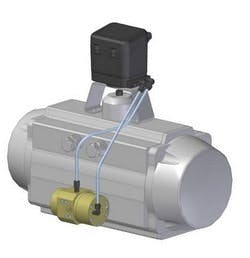Valves Switch up to Four Times Faster With Pneumatic Volume Booster
Pneumatic positioners match the particular current valve setting with the set point signal as a control value. Control valves with large-volume, pneumatically operated, part-turn and piston actuators usually need several seconds for large positioning processes or to close or open fully.
Now, with the newly developed 4090 pneumatic volume booster from Schubert & Salzer Control Systems, it is possible to amplify the air strength of the set point signal from positioner to actuator so these control valves, depending on nominal valve size, operate up to four times faster without any further modification, according to Schubert & Salzer.
The pneumatic volume booster is based on a diaphragm system with which the pressure and volumetric flow of the control air are increased up to 6 bar through the controlled insertion of supply air. In the volume booster, the control air is fed through an adjustable bypass to the actuator. By controlling the flow rate in the bypass, the switching threshold for activating the amplifying air can be controlled precisely. This ensures that the pneumatic volume booster applies the default amount of supply air to the actuator with small changes in pressure, i.e. small control interventions.
The 4090 pneumatic volume booster enables reductions in switching times both in the closing as well as the opening of a valve. Using a DN 300 ball sector valve for a direct comparison, the closing time for a single-acting actuator falls from 43 seconds to 21.5 seconds with a standard setting and to just 10 seconds with an “aggressive” bypass setting on the booster.





